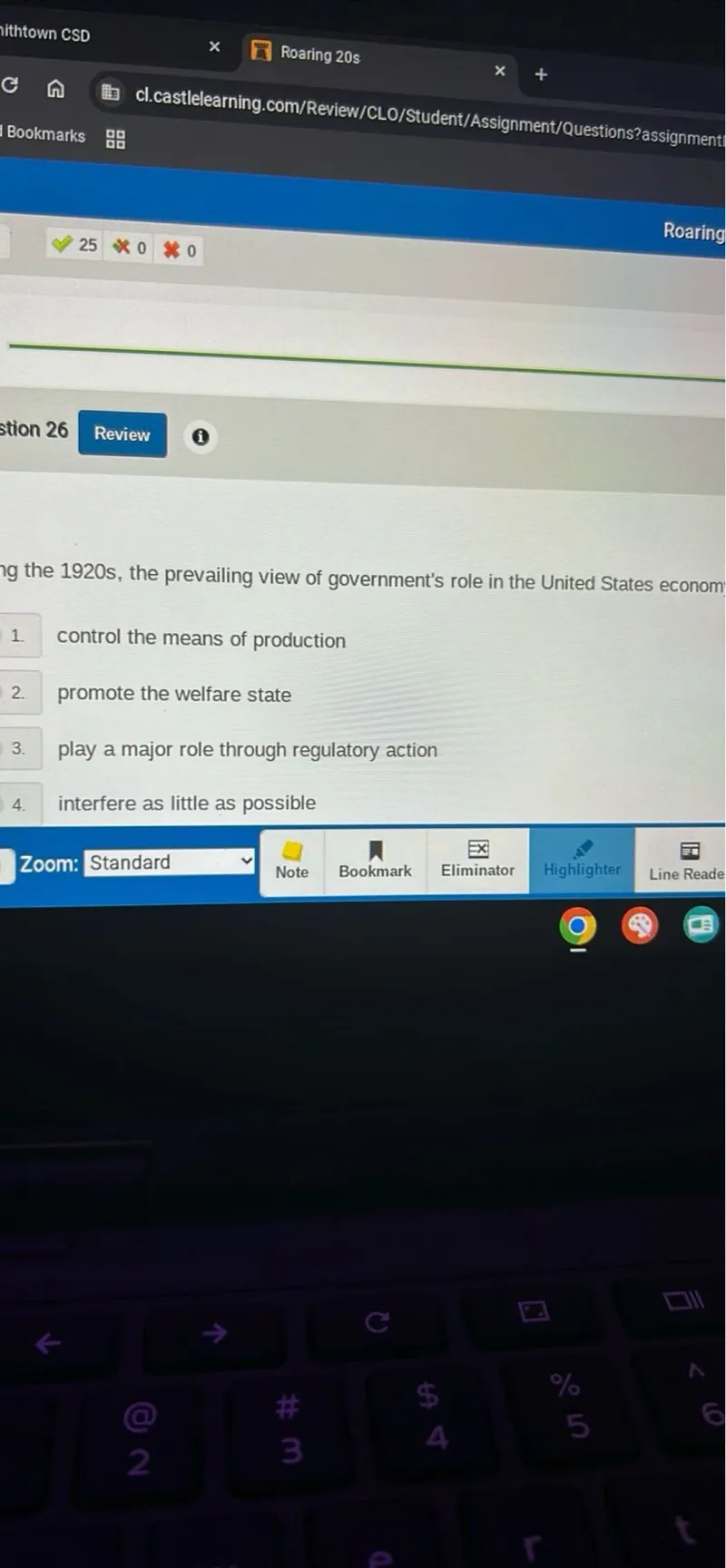The answer is 4. interfere as little as possible
This option suggests a socialist or communist approach, where the government owns and controls the means of production. This was not the prevailing view in the United States during the 1920s, as the country was largely capitalist and favored private ownership.
The concept of a welfare state, where the government plays a significant role in providing social services and economic support, was not the dominant view in the 1920s United States. The New Deal policies of the 1930s, introduced by President Franklin D. Roosevelt, marked the beginning of more government involvement in welfare.
While there were some regulatory actions, such as antitrust laws and the Federal Reserve's monetary policies, the overall philosophy of the 1920s was not for the government to play a major role in the economy through regulation. The decade was characterized by a laissez-faire approach.
The 1920s in the United States, often referred to as the "Roaring Twenties," was a period of economic prosperity and minimal government intervention in the economy. The prevailing view was laissez-faire capitalism, where the government interfered as little as possible in economic affairs. This approach was reflected in the policies of Presidents Warren G. Harding and Calvin Coolidge, who advocated for limited government and reduced regulation.






